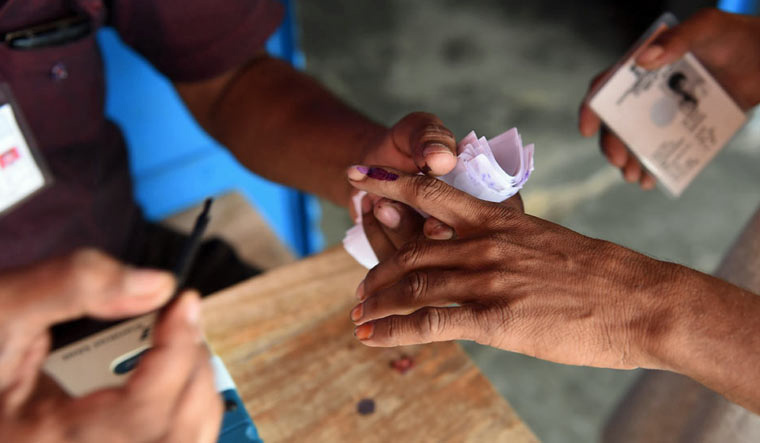The Election Commission has developed a prototype of a remote electronic voting machine for domestic migrant voters and has invited political parties for a demonstration on January 16.
A look at why this is being considered and the challenges involved:
Reasons for remote voting being considered as an option
Internal migration for various reasons including employment, education and marriage is considered to be a major reason behind the disenfranchisement of voters. There are an estimated 600 million internal migrants. Approximately 85 per cent of migration is within the states. In the Lok Sabha elections in 2019, the voter turnout was 67.4 per cent, which translates into one out of every three voters not having participated in the election. There are various reasons why migrants do not opt for registering themselves as voters in their current location. Many are away from the constituencies where they are registered as voters for short durations for employment or education. There is a reluctance to enroll as a voter in their current location also for reasons such as frequently changing residences, not enough social and emotional connect with the issues of the area, unwillingness to get their names deleted from the roll of their native place as they have permanent residence or property there.
Options looked at for involving migrants in voting
The Election Commission had formed a Committee of Officers on Domestic Migrants. It submitted its report in November 2016. In the report, while various solutions like internet voting, proxy voting, early voting and postal ballot for migrant voters were considered, the panel did not recommend any of these methods for various reasons. The panel called for creating a robust electoral roll so that there is only one registration per voter, developing requisite technology for the two-way electronically transmitted postal ballot in a controlled environment and amendment of laws so that sufficient time is available to the election machinery for pre-registration of such voters.
The Commission has considered various options such as two-way physical postal ballot, proxy voting, early voting, one-way or two-way electronic transmission of postal ballot and Internet-based voting. It finally zeroed in on using a multi-constituency remote EVM that can handle multiple constituencies in a single remote polling booth.
Remote voting in the current legal framework
At present, remote voting covers options for not voting in person at the designated polling station by voting through postal ballot from within the constituency for senior citizens, people with disability, Covid-affected persons and personnel of essential services. Postal ballot facility for voting outside the constituency is only available to distinctly identifiable and countable categories like service voters, special office holders, persons on election duty, and persons under preventive detention. In the international context, remote voting also means option available to a certain class of voters for early voting in person at designated locations or voting through postal ballot or electronic mail.
Challenges for the proposal
For remote voting to become possible for migrant voters, a host of legal, statutory, administrative and technological interventions are needed, and these will require wider consultations with all stakeholders. Issues such as defining who is a domestic migrant, identifying a domestic migrant, providing remote voting facility for every election and whether all migrants will be eligible to vote remotely will have to be resolved.
The challenges also include the question of how to deal with the concept of territorial constituency, the definition of remoteness, how to implement Model Code of Conduct in a remote location outside a state, the number of booths to be set up, who should be appointed as polling personnel, how to provide facility of polling agents, and how to ensure identification of voters and avoid impersonation.
It will be challenging to get opposition parties on board since many of them have expressed doubts about the reliability of EVMs and have claimed that the voting machines have been misused.




